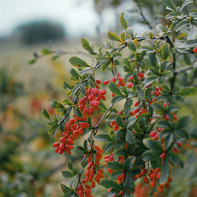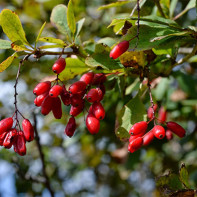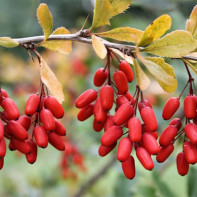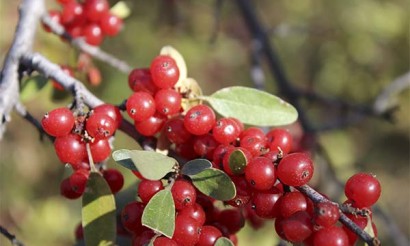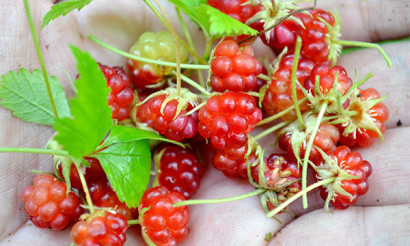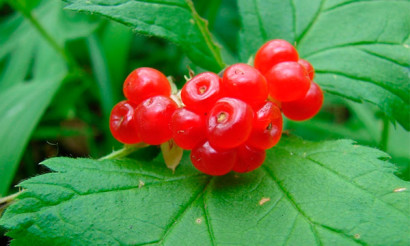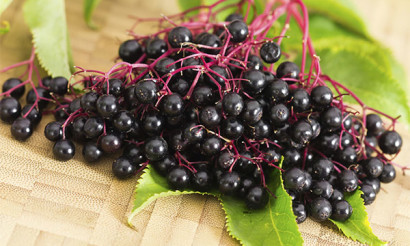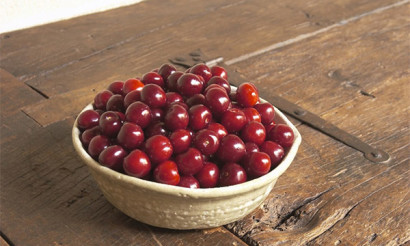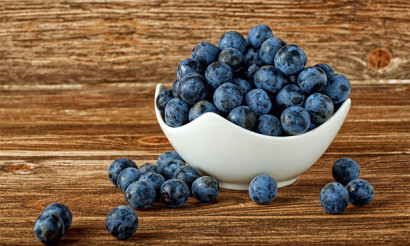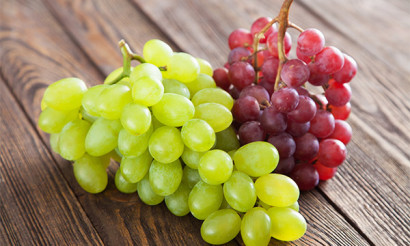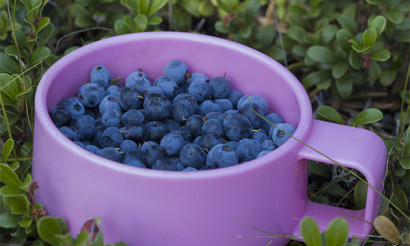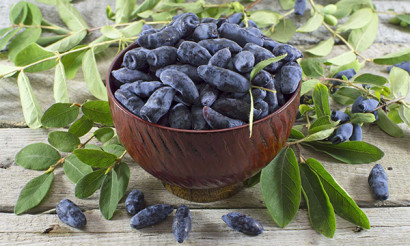Barberry: useful properties and contraindications
Barberry is a plant in the Barberry family, which includes many other shrubs. It is loved by many gardeners, it is often used for decorative purposes, but at the same time has a number of beneficial properties for the human body. This is the reason for the use of these berries in folk medicine, cooking and cosmetology.
- What does barberry look like
- Types
- How it differs from dogwood
- Composition and calories
- Useful properties of barberry
- General benefits
- For women
- For Men
- In pregnancy
- Breastfeeding
- For children
- Weight loss
- How to use dried barberry
- How to Dry
- Tea with barberry: benefits and harms
- How to brew
- Benefits of different parts of barberry
- The root
- Bark
- Leaves
- Flowers
- Barberry in traditional medicine
- Barberry in cosmetology
- Cooking
- Harm and Contraindications
- When to harvest and how to store berberries
- Can be frozen
- What can be made of barberry: Recipes
- Compote
- Jam
- Tincture
- Wine
- Interesting facts about barberry
How does barberry look like
A barberry is a prickly shrub that reaches 2-3 meters in height. Its leaves are ellipsoidal and measure 2.5 x 4.5 cm, and there are quite large spines on the trunk. Due to its unusual appearance, barberry is often used by plot owners as an inaccessible "fence".
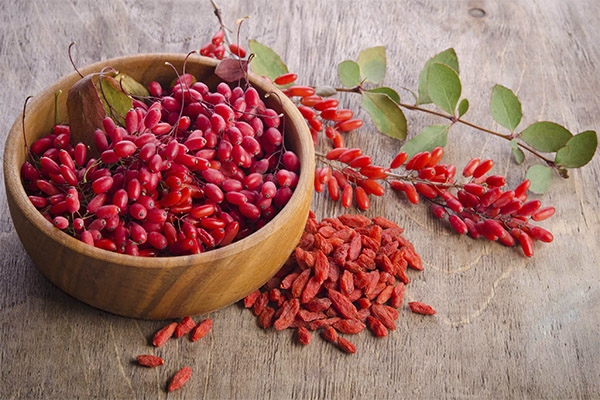
The barberry blooms for two weeks in spring, its yellow flowers providing a source of fragrant nectar for bees. The shrubs themselves can grow quite large, but they are trimmed to the desired shape to give a neat appearance. Roots of barberry are located in the upper ground layer and widely sprawling due to its "creeping".
The berries are elongated, barrel-shaped and have a rich scarlet color. One berry weighs about 4 g. The crop ripens in early fall, and ripe berries are very useful. Unripe fruits should not be eaten strictly, because they contain large quantities of alkaloids - substances listed as poisonous.
Types of
Barberry is a bushy plant, which has a wide variety of species. Each gardener will be able to find exactly the variety that is ideal for his plot. Consider the most popular species of this plant to date:
- Common is the most common shrub of the barberry family. It can be found in the southern part of Russia, as well as in the Caucasus and some other areas of hilly, forest-steppe terrain. Common barberry can grow up to 3 m, it has spines on its trunk, its leaves are rounded, green and red. The flowering of this type of shrub occurs in late spring, and the harvest matures by early fall.
- Tunberg - the second most popular species of barberry, which differs in its unpretentiousness. For this quality, it has been loved by many owners of homestead plots, who use the Tunberg barberry for decorative purposes. He can proliferate widely, so it needs to be pruned periodically. The trunk and stems have prickly, rather dense spikes, the leaves are oval, pointed to the end, green or dark red. The fruits of this variety of barberry bush are harvested in September.
- Amur shrub is a fairly common species of shrub, which externally very similar to the common shrub. It is a tall and wide bush with spikes on the stem and green leaves. In autumn it changes its color to bright orange, which together with scarlet fruits looks just fabulous. Amur barberry requires no special care, is resistant to temperature fluctuations, and is also perfectly suited for creating a living fence on the plot.
- Harlequin is a barberry bush, which is one of the most capricious. It grows very slowly and only in alkaline and neutral soils, it does not tolerate frost. However, outwardly Harlequin looks very beautiful: bright leaves with white spots, yellow flowers and scarlet berries. This barberry blooms lushly and brightly, mostly in May-June, and the fruits ripen in September.
- Cabernet is a type of barberry that grows in sunny areas in well-moistened soil. This shrub is quite low (about 1 m in height), has spikes on the trunk and stems, green, yellow and red leaves and red fruits. Cabernet barberry does not tolerate frost and drought, it also needs to be pruned regularly.
Of course, there are many more species of barberry in nature, including those bred by breeders, here are just the most common of them.
How it differs from dogwood
Barberry and dogwood are easy to confuse, as both shrubs have a similar appearance and fruit. However, if you know the main differences between these plants, they can still be distinguished:
- dogwood has red-brown bark, while barberry has yellow-brown bark.
- Cornel leaves are larger than those of barberry.
- Cornels flower in late March while barberry blooms in May-June.
- The fruit of dogwoods is burgundy, almost black in color, while barberry berries are bright red.
- Cornels contain one large seed, while barberries have several small ones.
Otherwise, the plants are very similar to each other. In addition, the ways of using these berries in folk medicine and cooking are much the same.
Composition and calories
Barberry has a unique chemical composition and, consequently, medicinal properties. The main active ingredient in this berry is barberine, except that the fruit contains palmitin, berberrubin, essential oils, flavonoids, pectin, vitamins C, E, P, B1, B2, BB, ascorbic, tartaric and citric acids, valuable oils (in the seeds), as well as glucose and fructose. At the same time the energy value of barberry is low - only 30 kcal per 100 grams.
Useful properties of barberry

General benefits
The chemical elements that make up the barberry have a number of beneficial properties for the human body. Thus, the berries are endowed with soothing, anti-inflammatory, antibacterial, antioxidant, general tonic and even anti-cancer effects. Back in ancient India and Egypt, barberry was used by famous healers and priests to treat a number of diseases. It is also known that this berry was recommended for the treatment of ulcers and bile discharge by Avicenna. In the Middle Ages on the basis of barberry made drugs for treating hepatitis, scurvy and avitaminosis. To date, the plant in question has not lost its relevance - its fruits are used to overcome a number of diseases.
For women
Barberry fruits, leaves and other parts of the plant are useful for women, first of all, because they have an analgesic effect. This allows you to relieve discomfort during menstruation, also the berry is able to stop heavy blood loss. The leaves and fruits of barberry can be brewed as a tea and consumed for weight loss purposes. Regular eating of the fruits of this plant allows you to maintain health and keeps your skin, hair and nails young and beautiful.
For men
Barberry fruits have a positive effect on men's health - they increase potency, help in the fight against diseases of the genitourinary system, as well as support the body during intense physical and mental stress. Decoctions of barberry are indicated for use in sprains and other injuries, as well as inflammatory diseases.
When pregnant
Despite all the usefulness, the berries and leaves of this plant are not recommended for use by pregnant women. This is due, first of all, to the high allergenicity of the fruit, as well as the fact that the barberry contains alkaloids - substances that can adversely affect the well-being of pregnant women and even provoke a miscarriage. Thus, berries are dangerous during pregnancy, which means that their use should be avoided.
When breastfeeding
Nursing women should not consume barberry, both the fruits themselves and decoctions from the leaves and roots of the plant. This is due, firstly, to the fact that barberry has a high degree of allergenicity, and secondly, this plant helps to eliminate fluid from the body, which may have a negative impact on the amount of milk.
For kids
Barberries are quite allergenic, in connection with which they can be included in children's diet only after the age of 12 years. But if there is a need to treat those or other diseases that require the use of barberry, its use is allowed, but in strictly limited quantities and only after checking the reaction of the body. So, barberry is shown to children suffering from diabetes, as a means of quickly reducing blood sugar levels. It is also recommended to use berries frequently ill children with a reduced immunity.
When losing weight
In the fight for a slim figure, women are willing to do almost anything. But in order to lose weight it is not necessary to exhaust the body with long hunger strikes or use dubious drugs. It is possible to become slimmer by including in your diet foods that promote fat burning, one of which is barberry. These berries can increase the metabolic rate, in connection with what they are often compared with Goji. Both improve the digestive process, have a choleretic effect, and promote the elimination of excess fluid from the body.
Those who want to lose weight are recommended to eat 100-200 grams of berries a day. Barberry is a low-calorie product, in a 200-gram portion contains only 60 kcal. At the same time, they will be an excellent substitute for sweets or a supplement to various dishes, and not only desserts, but also meat, fish and vegetables.
For weight loss, it is useful to drink tea from barberry. For this purpose, take 0.5 tbsp. of dry crushed barberry leaves, pour a glass of boiling water and insist for half an hour. Divide the resulting drink into 3 portions and consume during the day after the main meals.
What is the usefulness of dried barberry
Dried barberry fruits have many valuable properties. Even in ancient times, this product was used by folk healers to treat gastrointestinal diseases, liver, kidney, heart and blood vessels, as well as to improve immunity and as a sedative.
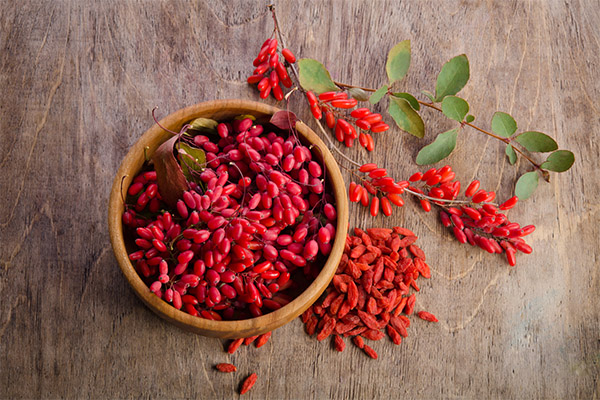
Dried barberry is an excellent complement to tea without causing weight gain because its 100 g contains only about 150 kcal. These dried fruits are indicated for diabetics, as they help reduce blood sugar.
How to dry
In order to cook dried barberry yourself, first of all, you need to choose ripe fruits. Most varieties of this plant ripen in early fall, but you need to harvest them before the first frost. After the berries are collected, they should be sorted, removing twigs, leaves and spoiled specimens, then washed and dried. Then spread the barberries in a thin layer on a baking tray, turn on the oven to 45-50 degrees and hold for about 30 minutes. Then increase the temperature to 60 degrees and leave the berries until they are ready.
Completely dried fruits have a wrinkled appearance, their color becomes darker, and no juice is released when pressed. Ready dried fruits should be placed in glass jars or airtight bags, they can be stored for one year.
Tea with barberry: benefits and harms
Barberry tea has a slight sourness and a pleasant aroma. The benefit of tea from this plant is that it helps to overcome colds, digestive disorders, insomnia and appetite disorders. This drink is also indicated for kidney and liver diseases.
If we talk about the harm of barberry tea, we can note that it has a negative impact on health only if it is consumed in excess. It is also not recommended to use this drink for pregnant, lactating women and children under the age of 12 years. In other cases, tea from barberry will only bring benefits to the human body.
How to brew
There are several recipes for brewing barberry tea. Some of them involve the addition of other herbs, which only increases the value of the drink. Let's consider the most effective recipes for barberry tea, which have been handed down from generation to generation for centuries.
- Soothing tea: mix 1 tbsp. dried leaves of barberry, wild strawberry and lemon balm, pour 750 ml of boiling water, infuse for 30 minutes, then strain. Ready to drink 200 ml twice a day with sleep disorders, increased anxiety and stress.
- Recipe for tonic tea: 1 tbsp. Dried berries barberry should be poured 200 ml of boiling water and insist 15-20 minutes. Drink half a glass 2-3 times a day to improve immunity, efficiency and general well-being.
- From indigestion: mix in equal proportions of dried barberry, fennel, cumin and motherwort, take 1 tbsp. mixture and pour 250 ml of boiling water. After 30 minutes filter, divide into 3 parts and drink during the day after a meal.
The usefulness of the different parts of the barberry
For therapeutic and preventive purposes, use not only the fruit of barberry, but also leaves, stems, flowers, as well as roots. Each part of the plant has a certain positive effect and is used for the preparation of various medicines.
Root
Decoction of the barberry root is used to treat inflammatory diseases of the mouth. Prepare it as follows: pour boiling water (200 ml) and insist for 15 minutes with a pinch of dry crushed roots of the plant. After that, strain the decoction, divide it into 3 parts and consume it during the day. You can use the resulting decoction to relieve pain and discomfort in the mouth.
Bark
From barberry bark prepare a tincture that helps with diseases such as cholelithiasis, hepatitis, inflammation of the kidneys and bladder. 2 Tbsp barberry bark pour 400 ml boiling water, to insist 4 hours and strain. Tincture should be taken in 100 ml 3-4 times a day.
Leaves .
From the leaves of barberry prepare decoctions and teas that help with colds and viral diseases, coughs and sore throats. To prepare a therapeutic drink should take 1 tbsp. dried chopped barberry leaves, pour a glass of boiling water, infuse for 30 minutes and strain. Use tea warm, half a cup 3 times a day.
Flowers
Barberry flowers make a fragrant and bright tea, which is a tonic, as well as helps with insomnia, stress and nervous tension. The tea is prepared as follows: 1 tbsp. dried flowers barberry pour 200 ml of boiling water, infuse for 15 minutes and drink for a day, divided into 3 parts.
Use of barberry in folk medicine
Barberry is widely used in folk medicine. Berries and other parts of this shrub are used to treat a large list of diseases, including diabetes, gout, kidney inflammation, gall bladder pathology, digestive disorders, colds, sleep disorders, appetite, nervous tension, etc.
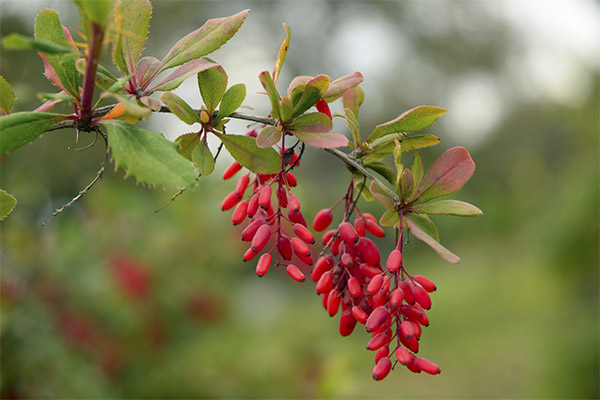
This plant contributes to prolonging youth, and also acts as a general tonic, restoring strength and improving health. However, in its use it is important to observe reasonable norms, because an overdose of some substances, such as alkaloids, which are part of this plant, can cause various complications.
Barberry in cosmetology
Despite the huge choice of cosmetics in modern stores, many women use folk beauty secrets. Thus, the berries and leaves of barberry were widely used in cosmetology. This plant is known for its rejuvenating, toning, anti-inflammatory properties, with its help you can eliminate age spots, pimples and small wrinkles. Consider the most effective cosmetic remedies, which are based on barberry.
- Decoction of the berries barberry: 1 tbsp. dried leaves of the plant pour a glass of boiling water, infuse for half an hour and strain. Such decoction rinse your hair after each wash, as well as rub into the scalp to get rid of dandruff and a feeling of dryness.
- Remedy for firmness and youthfulness of the skin: 2 tbsp. dried fruits pour a glass of steep boiling water and infuse for an hour. The resulting infusion can be used to wipe the face and body, it gives elasticity. Such a natural lotion eliminates age-related changes, as well as reduces the appearance of freckles and age spots, whitening the skin.
- home made barberry oil against rashes and to improve skin tone: you must take the crushed berries of barberry and vegetable refined oil in equal proportions, mix together and leave for 5 days to infuse. After that, use the oil for cosmetic purposes. It should be rubbed into the skin to achieve reduction of wrinkles, as well as reducing the appearance of pigmentation, cellulite manifestations and flabbiness. To achieve a visible effect, you must use the oil daily for 4 weeks, and after a month's break repeat the course.
Cooking Applications
Barberry berries have an unusual taste and aroma. They are quite tasty, and therefore widely used in cooking. The most common ways of making barberries are jams, compotes and dried fruits.
Due to its neutral taste, barberry is added not only to desserts, but also to meat, fish and vegetable dishes. Real gourmets will appreciate the following recipes based on barberry:
- Sour-sweet sauce for meat and fish dishes. To prepare this incredibly tasty Caucasian additive to the main dish, you will need the following ingredients: a glass of barberry, 2 cloves of garlic, a pinch of ground red pepper, dill, coriander and salt. First, you need to boil the berries for 15-20 minutes, then add all the other ingredients and beat with a blender. The resulting sauce can be used for its intended purpose - as an additive to pilaf, kebabs, steak, ribs, fish, chicken wings and much more.
- Soup with beef and barberries. An excellent dietary version of the first dish, which can be eaten even by thin people. To make it you should take 1.5 liters of water, 150 grams of lean beef, one medium potato, 1 tomato, half of an average onion, 50 grams of barberry berries, salt and some fresh coriander. Dice beef, pour water on it and put it to boil for 20 minutes. Then add potatoes chopped into small cubes, and finely chopped onion and tomato without skin (for convenience, you can scald it with boiling water) fry in a pan with a small piece of butter. Add the vegetables to the soup, simmer for 10 minutes, then add the barberry and leave the soup on the fire for another 10 minutes. In the ready dish add fresh chopped coriander. This soup will not only do no harm to the figure, but also replenish the body stores of vitamins and minerals, as well as surprise by its extraordinary taste.
- For making barberry jelly for the winter you will need 1 kg of berries, the same amount of sugar and a glass of water. The berries should be washed, put on a fire and boil until softened. After rubbing the mass of berries through a sieve. Add sugar and boil it. The jelly is ready, and all that is left is to pour it into presterilized jars and close with lids. This dessert is stored for 1-2 years without losing most of the useful properties of berries barberry.
Harm and contraindications
Almost any product can bring both benefits and harms, which also applies to barberry. To avoid problems in the form of allergies and side effects, it is important to consider the following rules of consumption of this berry:
- Only ripe barberry can be eaten, because unripe berries contain poisonous substances.
- Barberry should be eaten in moderation - 100-150 grams per day, otherwise there is an increased risk of allergies and oversaturation of the body of some of the substances that make up the berry.
- You should not use barberry during pregnancy and while breast-feeding, this berry is also contraindicated in children under 6, and in some cases up to 12 years of age.
- In the presence of serious health problems, in which the use of barberry raises doubts in the patient, it is necessary to obtain medical advice.
When to harvest and how to store barberry
Most varieties of barberry ripen in early fall, a smaller proportion in late August. Harvest only when the berries are fully ripe. Barberries are removed from the branches in household gloves, as this shrub can easily injure your hands with its sharp thorns. It is better to put berries in baskets or wide basins so that they do not crumple.
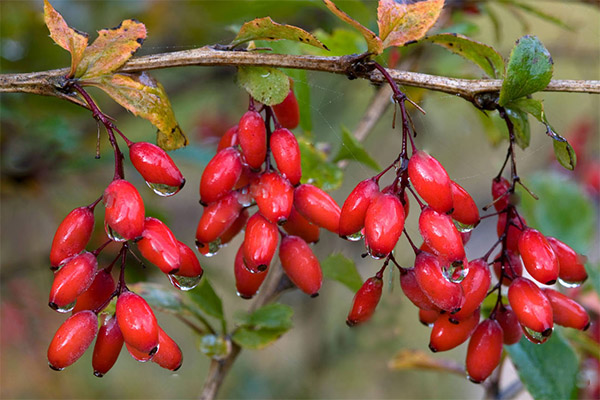
Fresh, barberry does not keep very long - only a few days at room temperature and up to 2 weeks in the refrigerator. To preserve the valuable fruit for a longer period, they can be dried, frozen, made into compote, jam or wine. Berries can be kept for up to two years in a dark, dry place depending on how they are made.
Can I freeze?
Barberry can be frozen, thus preserving the harvest until the next year. For freezing, berries are washed, dried and distributed in portioned bags or containers, then placed in the freezer. Frozen barberry can be stored for 1-2 years.
What can be made out of barberry: Recipes
From the fruit of the barberry tree can be prepared such preparations as jam, compote, tincture and wine. All this will help to preserve the harvested crop for a year or even two. Consider the classic recipes listed methods of making barberries:
Kompot
The most delicious compote from barberries is obtained if you add some apples to it. To prepare such a drink, you will need 300 g of berries, 500 g of apples (preferably a sweet variety), 350 g of sugar and a liter of water. Apples should be cut into slices, removing the core, add washed berries barberries, put it all into a jar and pour the sugar syrup (mix the specified amount of sugar with water and boil over low heat until bubbles appear). Then the container with the compote sterilized for 15-20 minutes in a large pot of boiling water and cover.
Jam
To make barberry jam you need to take equal proportions of berries, sugar and water. To start, pick and wash the berries, pour water over them and leave to soak for 5-6 hours. While the berries are infusing, make a syrup: mix sugar with water and hold over medium heat until the sugar has dissolved and bubbles appear. Then add the berries to the syrup and simmer until the berries are at the bottom. The finished jam pour into clean sterilized glass jars and seal.
Tincture
Tincture of barberry is prepared according to the following recipe: 3 tbsp. berries pour 1 liter of vodka, alcohol (45 degrees) or moonshine, add sugar or honey to taste. Put in a dark place for 10-12 days. The contents should be stirred every 3 days. The finished tincture strain and use for medicinal purposes 1-2 tbsp. 3 times a day.
Wine
Wine from barberry is not only a great addition to the dinner, but also serves as an anti-inflammatory, choleretic agent. To prepare it is not difficult if you take the following recipe: 3 kg of berries, sorted but not washed, put in a clean container for making wine, pour 2 kg of sugar, pour it all with 12 liters of cold boiled water. Then close the container with a lid, in which you pierce a hole and insert a plastic tube, the other end dipping into another container filled with water. The wine should ferment for about 20-25 days, but if you want you can strain it and leave it for some more time to age. Barberry wine is a very tasty and healthy drink, which contains 11-13 degrees of alcohol and a lot of vitamins.
Interesting facts about barberry
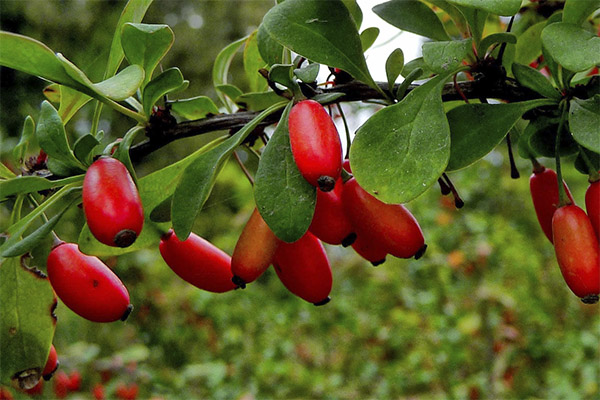
- Barberry became so called due to the unusual shape of its flowers: from Arabic "bayberi" means "petals like sea shells".
- In some U.S. states, the cultivation of barberry is prohibited by law. This is due to the fact that this shrub grows too much and can harm other plants and buildings.
- The first mention of barberry was found by archaeologists and dates back to 650 BC. This is proven by clay tablets from the library of the Assyrian king.
- The composition of barberry includes the same substances that are contained in the not unknown drug to increase potency "Viagra".
«Important: all information on the site is provided solely for introductory purposes. Before applying any recommendations, consult with a specialized specialist before applying any recommendations. Neither the editors nor the authors shall be liable for any possible harm caused by materials."

